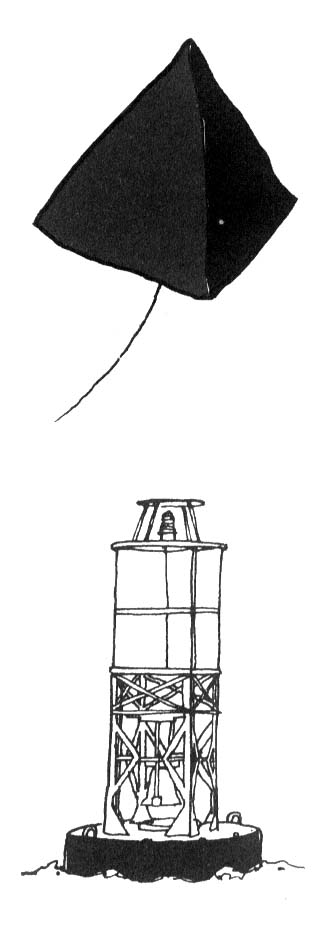
Characteristics of Marks
BY DAVE DELLENBAUGH
Think before you reach the mark. The technique you use to round a mark depends a lot on the type of mark you are rounding, plus the wind and water conditions. If you’re rounding a small inflatable in big waves and current, for example, you must approach it very differently than if you are rounding a large government bell byouy in light air. Here’s a checklist of “mark factors.”
 |
Inflatable (movable) marks
• Watch out because the windward mark may move toward you when your sails blanket it.
• Since you’re never sure exactly where the RC will put these marks, it’s important to get a visual sighting of every mark (before you round the previous mark if possible).
• Don’t get too close to these marks because they bounce around with wind and waves.
• Beware of marks dragging anchors or being dragged by other boats.
• Watch for long anchor lines to windward or up-current (especialy at the windward mark).
• Look for the stake boats, since these are usually easier to see than the marks. If there are no stake boats, watch the mark-set boat when it goes out to set the windward mark.
• Know the procedure for what happens when marks are moved, including what color the new mark will be (see rule 33 and your sailing instructions).
Fixed (permanent) marks
• Don’t worry about hooking the ground tackle because it is usually chain and goes straight down. Also, these marks will not be affected by your wind shadow like inflatables.
• Fixed marks are shown on charts and (almost) never move, so you can plug them into your GPS (or simply plot the bearing of each leg) well before the start.
• Since the marks are fixed, try sailng the offwind-leg angles before you start.
• With fixed marks, it is more difficult for the race committee to set a true windward leg, so look ahead and be sure you stay on the tack that’s closer to the next mark.
• Government buoys often mark shoal water, so beware of changes in current, running aground, and the fact that the area inside the mark may be considered an obstruction.
• These marks may be large enough to be considered obstructions.
• Contact can be hazardous to your boat’s health, so try to avoid getting too close.
Dave is a two-time America’s Cup veteran who publishes a newsletter Speed & Smarts. For a subscription call: 800-356-2200.